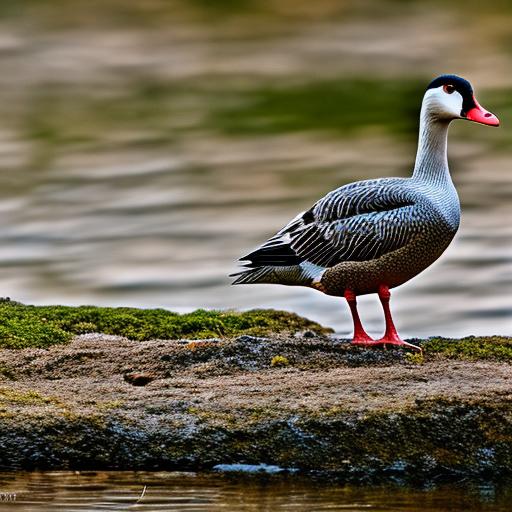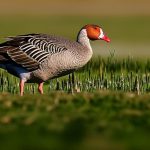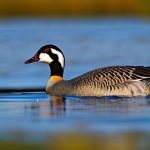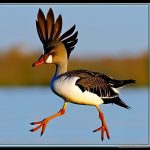Geese can be a beautiful sight to behold, but they can also be a nuisance when they invade our properties and cause damage. From parks and golf courses to farms and residential areas, geese can leave behind droppings, destroy crops, and create safety hazards. Fortunately, there is a solution: decoys. Decoys are lifelike replicas of geese that are strategically placed to deter real geese from landing or staying in an area. In this article, we will explore how decoys work in keeping geese away, the different types of decoys available, the benefits of using decoys for geese control, factors to consider when choosing decoys, how to set up decoys effectively, how to maintain and store decoys for longevity, alternatives to decoys for geese control, common mistakes to avoid when using decoys, and why decoys are a reliable solution for geese control.
Key Takeaways
- Decoys are effective tools for controlling geese populations.
- Decoys work by mimicking the appearance and behavior of real geese.
- There are different types of decoys available for geese control, including full-body, shell, and silhouette decoys.
- Benefits of using decoys for geese control include cost-effectiveness, ease of use, and non-toxicity.
- Factors to consider when choosing decoys include the location, size of the area, and the type of geese present.
How Decoys Work in Keeping Geese Away
Decoys work by mimicking the appearance and behavior of real geese. They are designed to look like geese in various positions such as feeding, resting, or flying. Some decoys even have motion features that simulate the movement of real geese. When placed in an area where geese are unwanted, these lifelike replicas create the illusion of a safe and occupied space. Geese are social animals and prefer to land and stay in areas where they see other geese. When they spot the decoys, they assume that the area is already occupied and move on to find another location.
In addition to their appearance, some decoys also emit sounds that mimic the calls of real geese. This adds another layer of realism and further deters geese from landing or staying in an area. The combination of visual and auditory cues provided by decoys makes them an effective tool in geese control. By creating the illusion of a populated and potentially dangerous area, decoys can discourage geese from invading our properties and causing damage.
Types of Decoys for Geese Control
There are several types of decoys available for geese control, each with its own pros and cons. The most common types include full-body decoys, silhouette decoys, and motion decoys.
Full-body decoys are the most realistic option as they are three-dimensional replicas of geese. They are typically made of durable materials such as plastic or foam and are designed to withstand various weather conditions. Full-body decoys are often weighted to prevent them from tipping over in windy conditions. They provide a lifelike appearance that can effectively deter geese from landing or staying in an area. However, full-body decoys can be more expensive and require more storage space compared to other types.
Silhouette decoys are flat, two-dimensional replicas of geese that are typically made of lightweight materials such as plastic or cardboard. They are easy to transport and set up, making them a popular choice for hunters and farmers. Silhouette decoys are often placed on stakes or frames to create the illusion of geese standing or feeding. While they may not be as realistic as full-body decoys, silhouette decoys can still be effective in deterring geese when used in large numbers.
Motion decoys are designed to simulate the movement of real geese. They often have rotating wings or heads that create the appearance of geese landing or feeding. Motion decoys can be used in combination with full-body or silhouette decoys to enhance their effectiveness. The movement provided by motion decoys adds another layer of realism that can fool geese into thinking that an area is occupied by their kind. However, motion decoys can be more expensive and require batteries or other power sources to operate.
Benefits of Using Decoys for Geese Control
Using decoys for geese control offers several advantages over other methods. First and foremost, decoys are a cost-effective solution. Compared to other methods such as netting or repellents, decoys are a one-time investment that can be used repeatedly. Once purchased, decoys can be set up and taken down as needed, making them a flexible and affordable option for geese control.
Decoys are also an eco-friendly solution. Unlike chemical repellents or netting, decoys do not harm the geese or the environment. They simply create the illusion of a populated area, which encourages geese to find another location. Decoys are a humane way to deter geese without causing them any harm.
Furthermore, decoys are a reliable solution for geese control. When properly set up and maintained, decoys can effectively deter geese from landing or staying in an area. They provide a visual and auditory deterrent that is difficult for geese to ignore. Unlike other methods that may require constant monitoring or maintenance, decoys can be left in place for extended periods of time without losing their effectiveness.
Factors to Consider When Choosing Decoys for Geese Control
When selecting decoys for geese control, there are several important factors to consider. The size of the decoys is one of the most important factors to consider. Geese come in different sizes, so it is important to choose decoys that accurately represent the size of the geese in your area. Using decoys that are too small or too large may not be as effective in deterring geese.
Realism is another factor to consider when choosing decoys. The more realistic the decoys look, the more likely they are to fool geese into thinking that an area is occupied. Look for decoys that have lifelike details such as feather patterns and colors. Some decoys even have flocked heads or bodies to further enhance their realism.
Durability is also an important factor to consider. Decoys will be exposed to various weather conditions, so it is important to choose decoys that are made of durable materials. Look for decoys that are designed to withstand wind, rain, and UV exposure. Decoys that are made of high-quality materials will last longer and provide better value for your investment.
Setting Up Decoys for Effective Geese Control
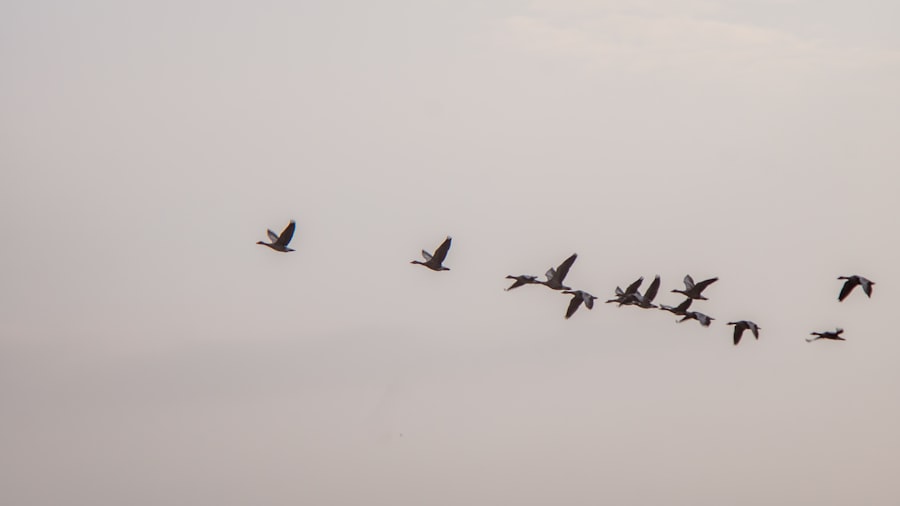
To set up decoys effectively, proper placement, spacing, and positioning are key. Decoys should be placed in areas where geese are likely to land or congregate. This could be near bodies of water, open fields, or areas where geese have been seen in the past. By placing decoys in these areas, you increase the chances of deterring geese from landing or staying.
Spacing between decoys is also important. Geese prefer to land in areas where there is plenty of space for them to move around and feed. By spacing out the decoys, you create the illusion of a crowded area and discourage geese from landing. However, be careful not to space the decoys too far apart as this may make them less effective.
The positioning of the decoys is another important factor to consider. Decoys should be positioned in a way that mimics the natural behavior of geese. For example, some decoys should be placed in feeding positions while others should be placed in resting positions. By creating a realistic scene with the decoys, you increase the chances of fooling geese into thinking that an area is occupied.
Maintenance and Storage of Decoys for Longevity
To ensure the longevity of your decoys, proper maintenance and storage are essential. After each use, it is important to clean your decoys to remove any dirt or debris that may have accumulated. Use a mild detergent and water to gently clean the decoys, taking care not to damage any delicate parts such as the flocking or paint.
Inspect your decoys regularly for any signs of damage or wear. If you notice any cracks, tears, or other damage, repair them as soon as possible. There are repair kits available specifically designed for decoys that can help you fix any issues. By addressing any damage promptly, you can extend the lifespan of your decoys and ensure their effectiveness.
When storing your decoys, it is important to protect them from dust, moisture, and pests. Store your decoys in a cool, dry place where they will not be exposed to extreme temperatures or direct sunlight. Consider using storage bags or containers specifically designed for decoys to keep them safe and organized. By properly storing your decoys, you can ensure that they will be ready for use whenever you need them.
Alternatives to Decoys for Geese Control
While decoys are a reliable solution for geese control, there are other methods available that may be more suitable for certain situations. Netting is a common method used to physically prevent geese from accessing certain areas. It can be effective in protecting crops or specific areas where geese are causing damage. However, netting can be expensive and may require regular maintenance to ensure its effectiveness.
Repellents are another option for geese control. There are chemical repellents available that can be sprayed on surfaces to deter geese from landing or staying. These repellents often have an unpleasant odor or taste that geese find unappealing. However, repellents may need to be reapplied regularly and may not be suitable for all environments.
Dogs can also be used as a natural deterrent for geese. Certain breeds of dogs, such as Border Collies, are known for their herding instincts and can effectively chase away geese. However, using dogs for geese control requires proper training and supervision to ensure the safety of both the dog and the geese.
Common Mistakes to Avoid When Using Decoys for Geese Control
When using decoys for geese control, there are some common mistakes that people make. One common mistake is using too few decoys. Geese are social animals and prefer to land in areas where they see a large number of their kind. Using only a few decoys may not create the illusion of a populated area and may not be as effective in deterring geese.
Another common mistake is not properly maintaining or storing the decoys. Decoys that are dirty, damaged, or improperly stored may not be as effective in deterring geese. It is important to clean and inspect your decoys regularly and store them properly when not in use.
Finally, a common mistake is not adjusting the placement or positioning of the decoys. Geese can become accustomed to the presence of decoys if they are left in the same position for extended periods of time. It is important to periodically move or adjust the decoys to create a dynamic and realistic scene that can effectively deter geese.
Decoys as a Reliable Geese Control Solution
In conclusion, decoys are a reliable and effective solution for geese control. By mimicking the appearance and behavior of real geese, decoys create the illusion of a populated area and deter geese from landing or staying. There are different types of decoys available, each with its own pros and cons. When choosing decoys, factors such as size, realism, and durability should be considered. Properly setting up and maintaining decoys is essential for their effectiveness and longevity.
While decoys are a cost-effective and eco-friendly solution for geese control, there are other methods available that may be more suitable for certain situations. Netting, repellents, and dogs are alternative methods that can be used in combination with decoys or on their own. However, decoys remain a reliable and effective solution that can be used in various environments.
By avoiding common mistakes and properly using decoys, you can effectively deter geese from invading your property and causing damage. Decoys provide a humane and non-harmful way to control geese without causing them any harm. Consider using decoys for your own geese control needs and enjoy a goose-free environment.
If you’re looking for effective ways to keep geese away from your property, you might be interested in this informative article on decoy techniques. Decoys can be a great tool to deter geese and prevent them from causing damage or leaving droppings in your outdoor spaces. To learn more about how to use decoys effectively, check out this helpful resource: Decoy Techniques for Keeping Geese Away. And while you’re at it, don’t forget to explore other useful articles on poultry care and coop maintenance, such as Turning a Shed into a Chicken Coop, Heater for a Chicken Coop, and Snaplock Chicken Coop. Happy reading and happy geese-free property!
Meet Walter, the feathered-friend fanatic of Florida! Nestled in the sunshine state, Walter struts through life with his feathered companions, clucking his way to happiness. With a coop that’s fancier than a five-star hotel, he’s the Don Juan of the chicken world. When he’s not teaching his hens to do the cha-cha, you’ll find him in a heated debate with his prized rooster, Sir Clucks-a-Lot. Walter’s poultry passion is no yolk; he’s the sunny-side-up guy you never knew you needed in your flock of friends!

